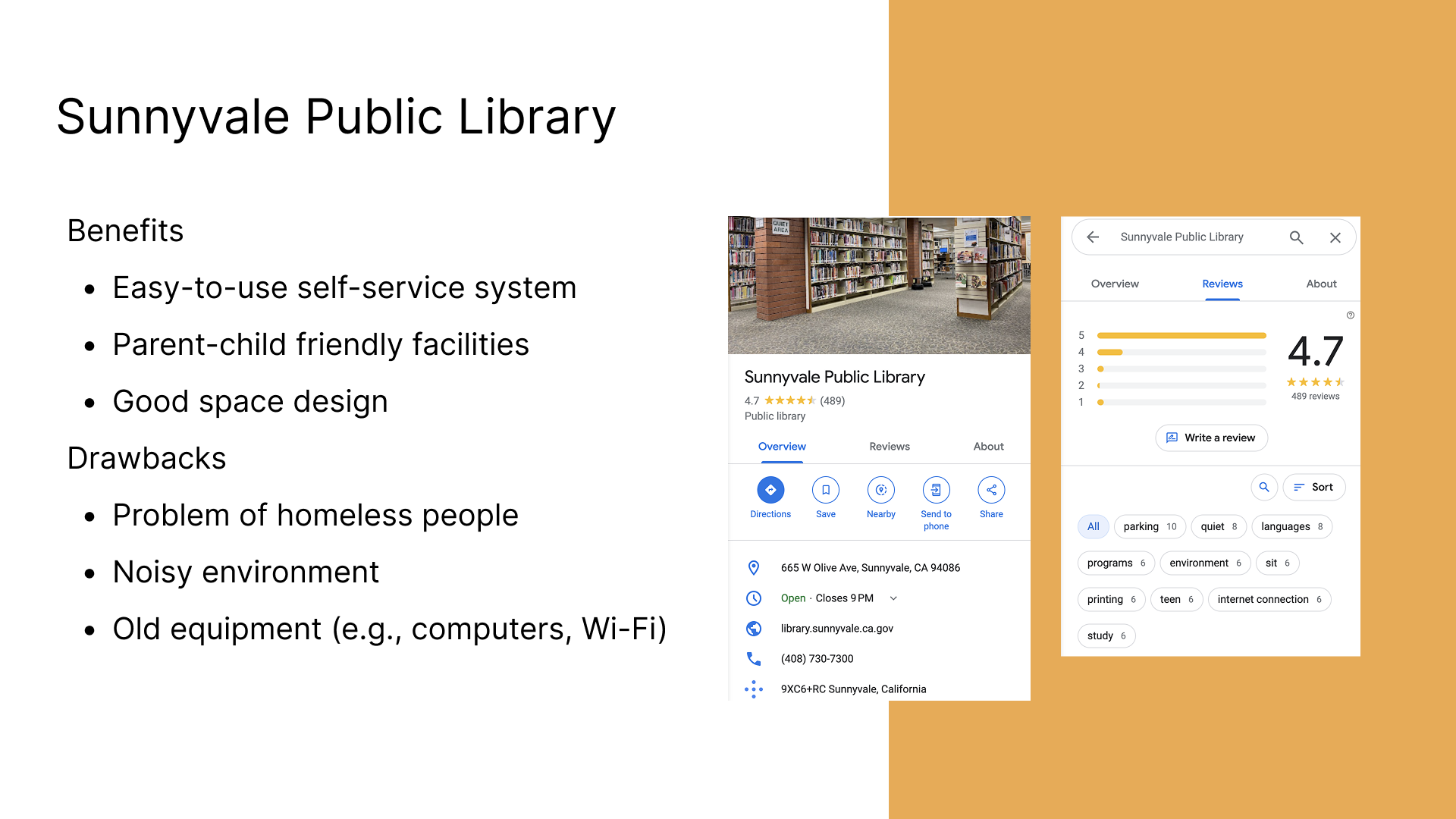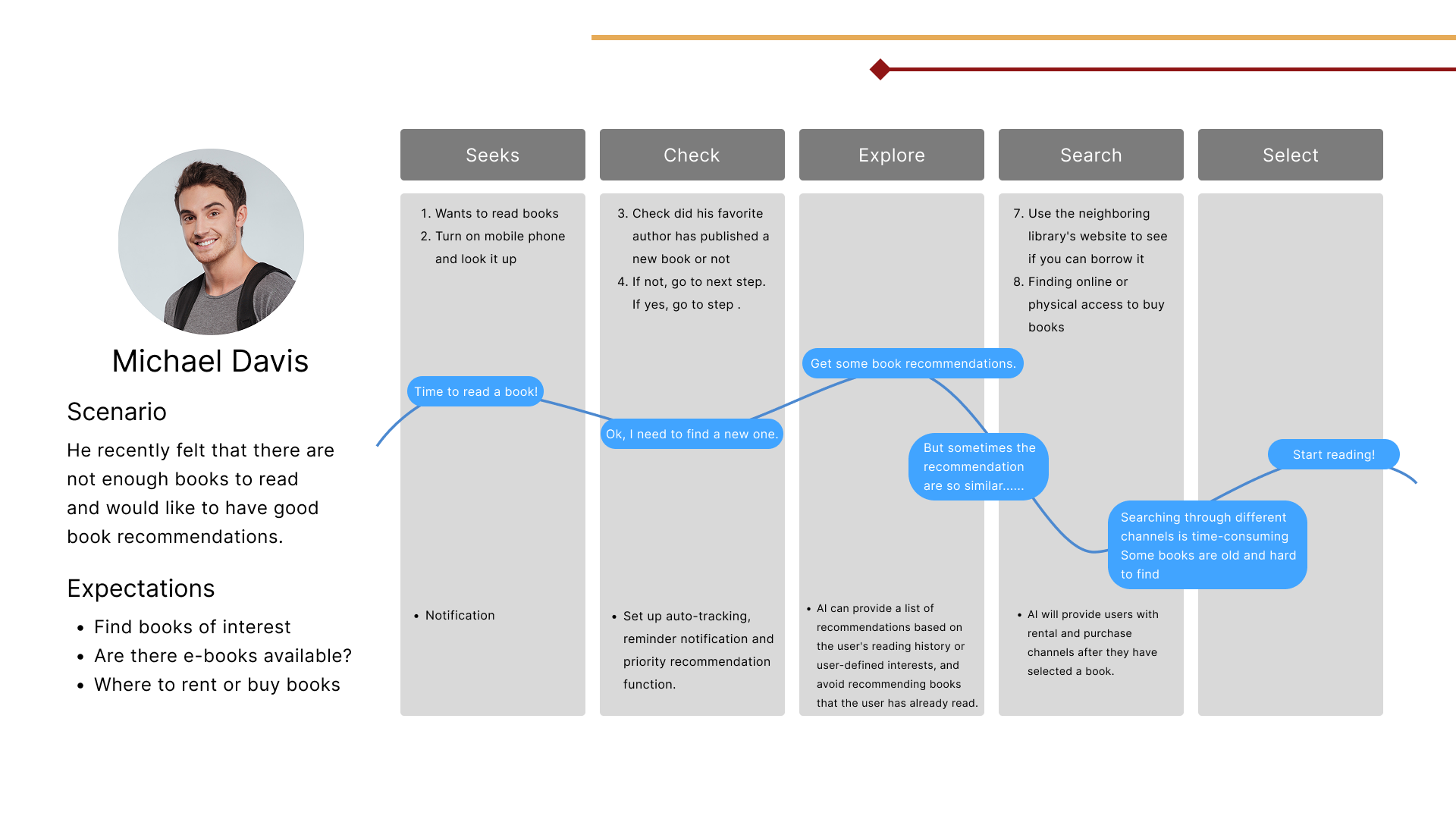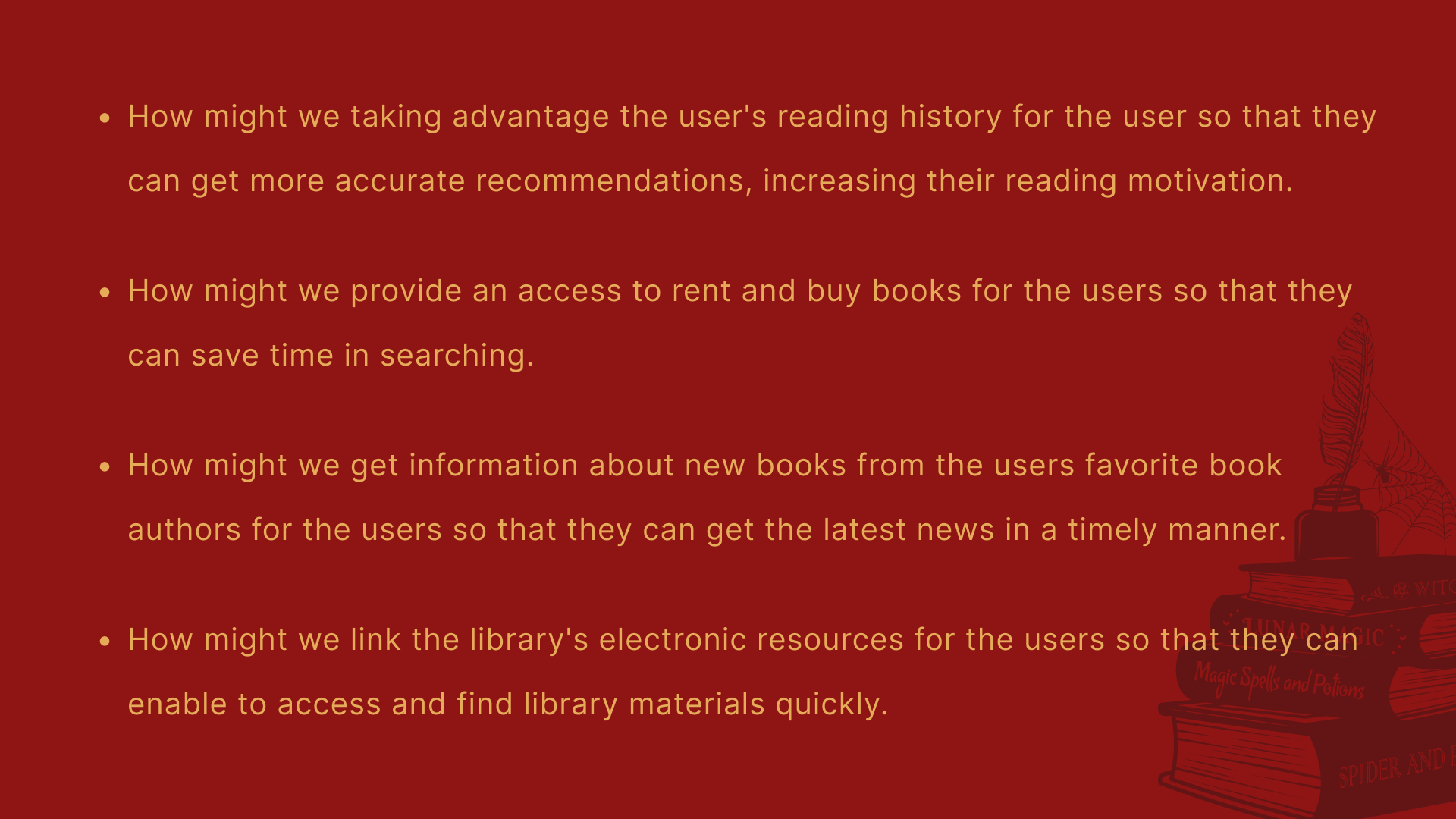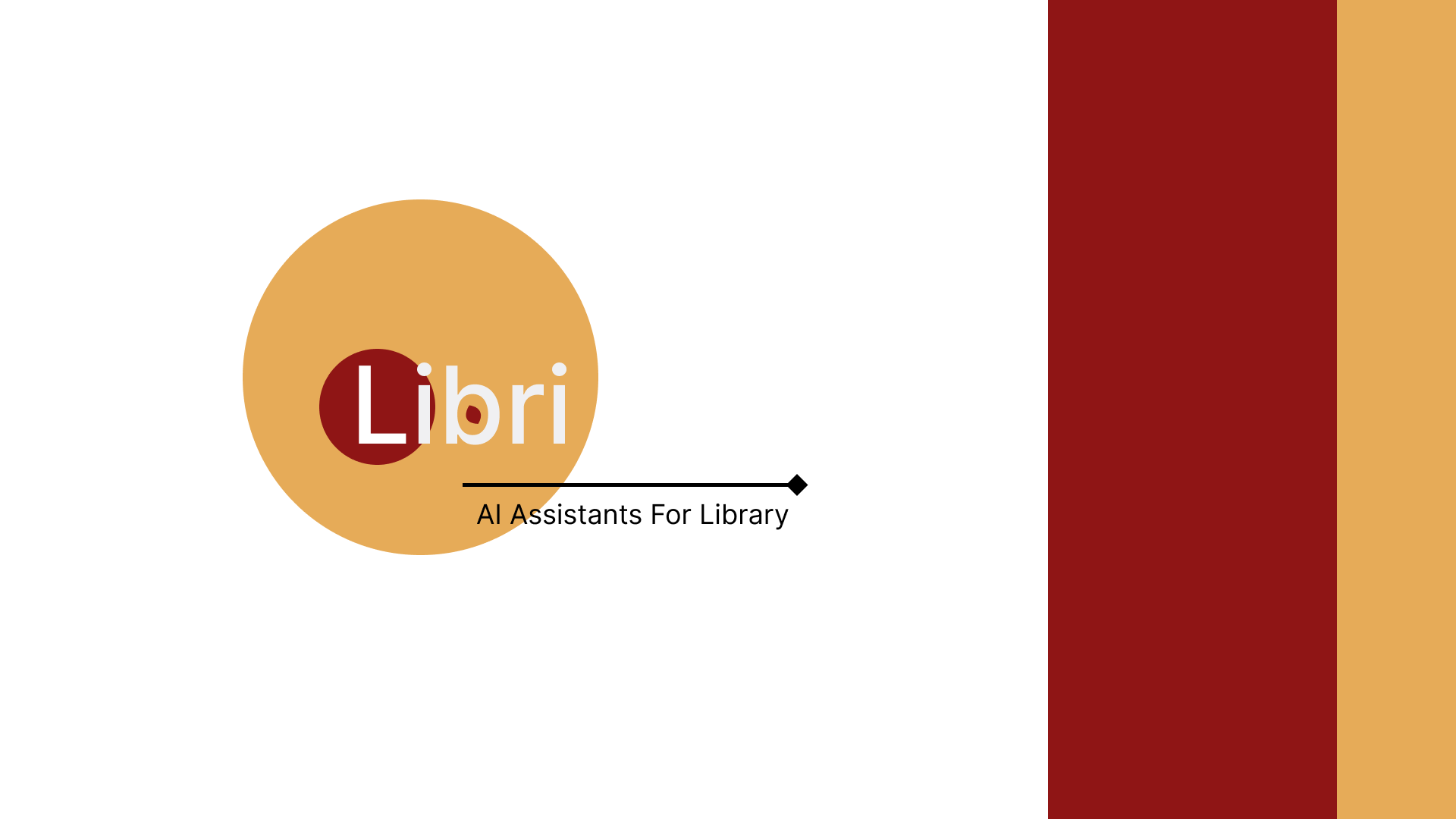
2 Months
Personal project
Figma

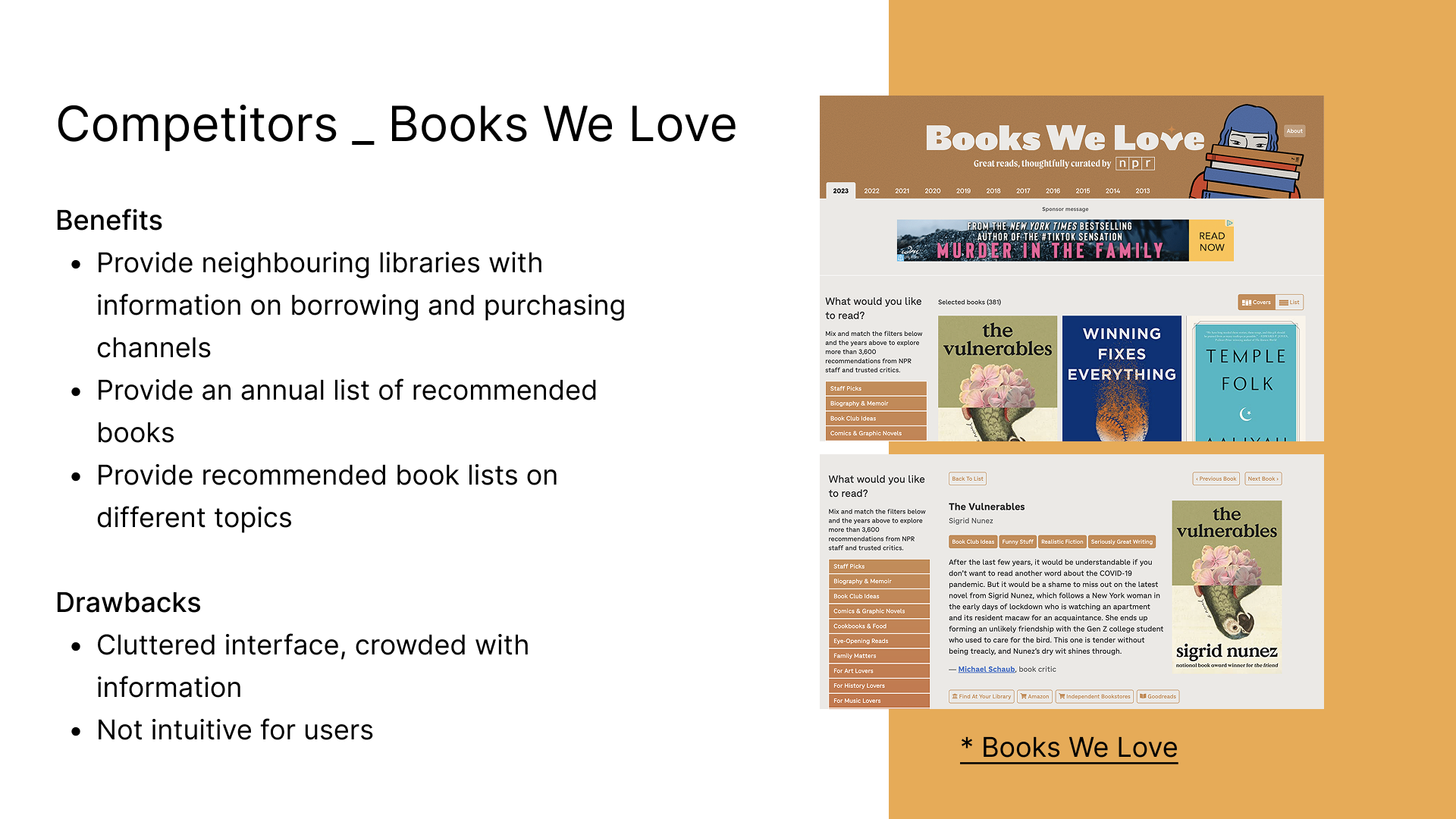
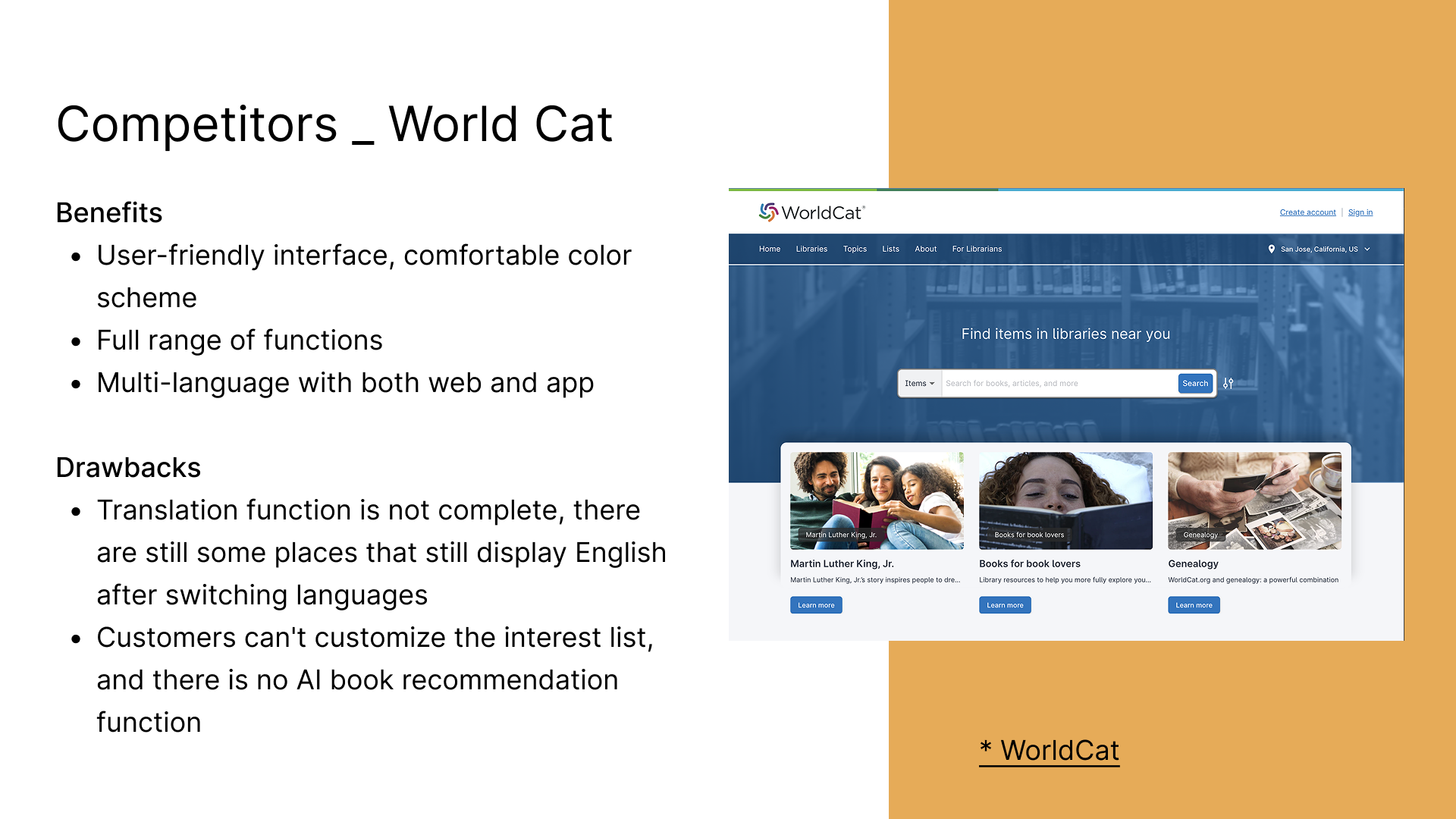
To understand users' interaction patterns with libraries, their pain points in finding books, and their acceptance of AI-powered tools.
The survey results confirmed the feasibility and importance of AI book recommendations. Future design should focus on users' preferred interaction modes and address privacy and reliability concerns to build user trust. It was also evident that highlighting resources beyond just book lending is important.

